Zilong Zhong
Deep Learning for LiDAR Point Clouds in Autonomous Driving: A Review
May 20, 2020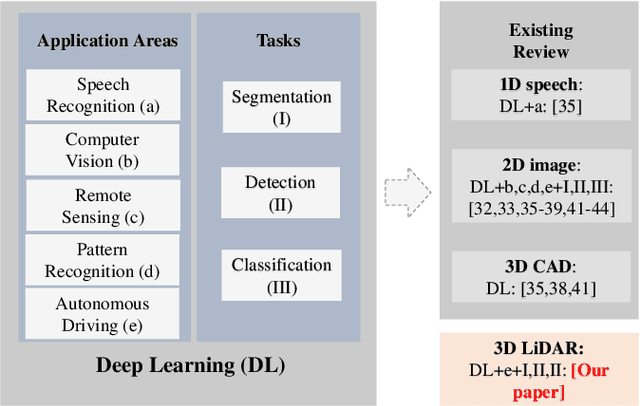
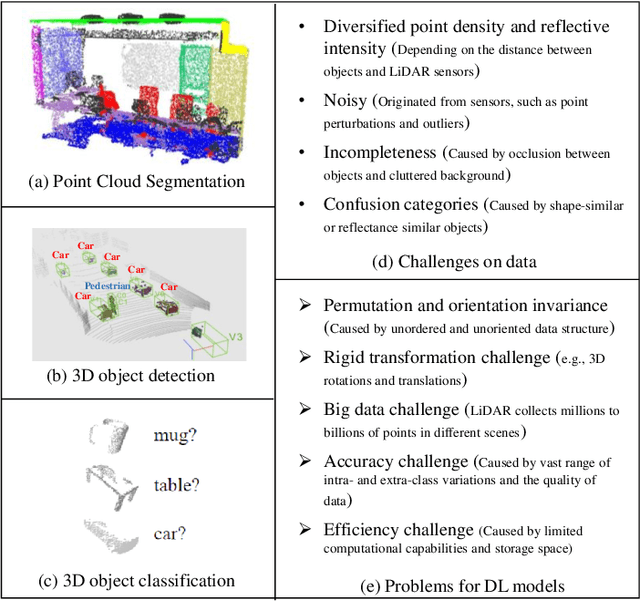
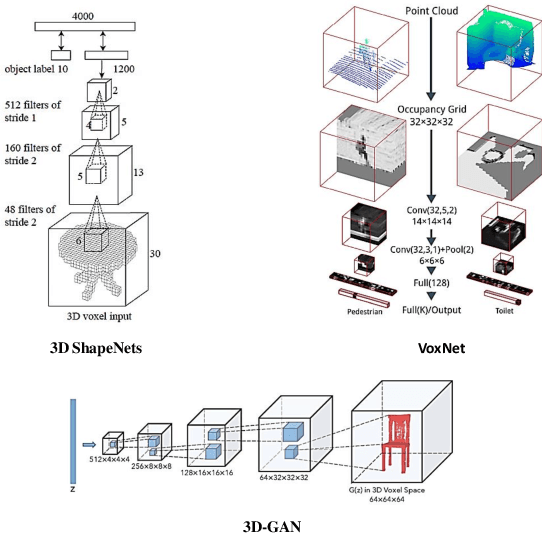
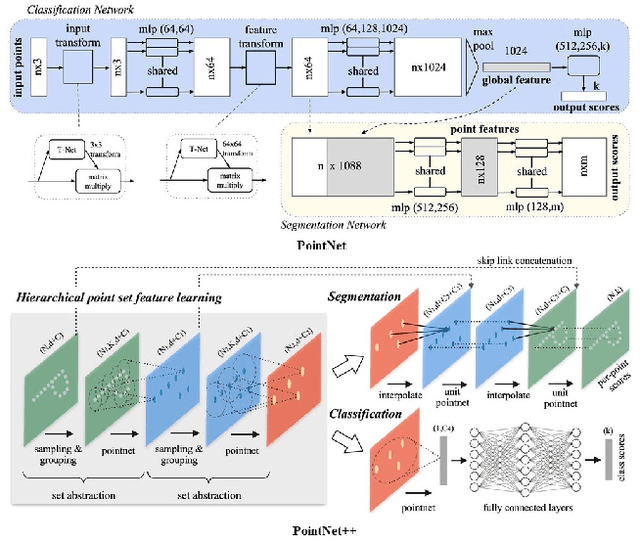
Abstract:Recently, the advancement of deep learning in discriminative feature learning from 3D LiDAR data has led to rapid development in the field of autonomous driving. However, automated processing uneven, unstructured, noisy, and massive 3D point clouds is a challenging and tedious task. In this paper, we provide a systematic review of existing compelling deep learning architectures applied in LiDAR point clouds, detailing for specific tasks in autonomous driving such as segmentation, detection, and classification. Although several published research papers focus on specific topics in computer vision for autonomous vehicles, to date, no general survey on deep learning applied in LiDAR point clouds for autonomous vehicles exists. Thus, the goal of this paper is to narrow the gap in this topic. More than 140 key contributions in the recent five years are summarized in this survey, including the milestone 3D deep architectures, the remarkable deep learning applications in 3D semantic segmentation, object detection, and classification; specific datasets, evaluation metrics, and the state of the art performance. Finally, we conclude the remaining challenges and future researches.
Squeeze-and-Attention Networks for Semantic Segmentation
Sep 10, 2019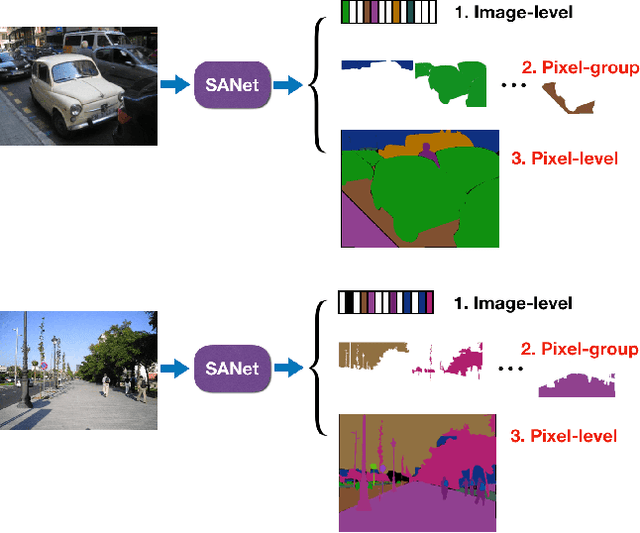
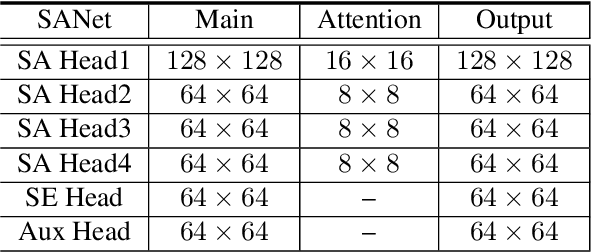

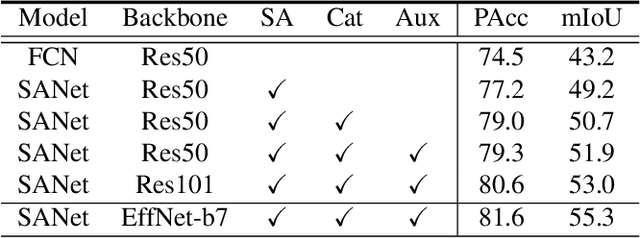
Abstract:Squeeze-and-excitation (SE) module enhances the representational power of convolution layers by adaptively re-calibrating channel-wise feature responses. However, the limitation of SE in terms of attention characterization lies in the loss of spatial information cues, making it less well suited for perception tasks with very high spatial inter-dependencies such as semantic segmentation. In this paper, we propose a novel squeeze-and-attention network (SANet) architecture that leverages a simple but effective squeeze-and-attention (SA) module to account for two distinctive characteristics of segmentation: i) pixel-group attention, and ii) pixel-wise prediction. Specifically, the proposed SA modules impose pixel-group attention on conventional convolution by introducing an 'attention' convolutional channel, thus taking into account spatial-channel inter-dependencies in an efficient manner. The final segmentation results are produced by merging outputs from four hierarchical stages of a SANet to integrate multi-scale contexts for obtaining enhanced pixel-wise prediction. Empirical experiments using two challenging public datasets validate the effectiveness of the proposed SANets, which achieved 83.2% mIoU (without COCO pre-training) on PASCAL VOC and a state-of-the-art mIoU of 54.4% on PASCAL Context.
Generative Adversarial Networks and Conditional Random Fields for Hyperspectral Image Classification
May 12, 2019



Abstract:In this paper, we address the hyperspectral image (HSI) classification task with a generative adversarial network and conditional random field (GAN-CRF) -based framework, which integrates a semi-supervised deep learning and a probabilistic graphical model, and make three contributions. First, we design four types of convolutional and transposed convolutional layers that consider the characteristics of HSIs to help with extracting discriminative features from limited numbers of labeled HSI samples. Second, we construct semi-supervised GANs to alleviate the shortage of training samples by adding labels to them and implicitly reconstructing real HSI data distribution through adversarial training. Third, we build dense conditional random fields (CRFs) on top of the random variables that are initialized to the softmax predictions of the trained GANs and are conditioned on HSIs to refine classification maps. This semi-supervised framework leverages the merits of discriminative and generative models through a game-theoretical approach. Moreover, even though we used very small numbers of labeled training HSI samples from the two most challenging and extensively studied datasets, the experimental results demonstrated that spectral-spatial GAN-CRF (SS-GAN-CRF) models achieved top-ranking accuracy for semi-supervised HSI classification.
Generative Adversarial Networks and Probabilistic Graph Models for Hyperspectral Image Classification
Feb 10, 2018


Abstract:High spectral dimensionality and the shortage of annotations make hyperspectral image (HSI) classification a challenging problem. Recent studies suggest that convolutional neural networks can learn discriminative spatial features, which play a paramount role in HSI interpretation. However, most of these methods ignore the distinctive spectral-spatial characteristic of hyperspectral data. In addition, a large amount of unlabeled data remains an unexploited gold mine for efficient data use. Therefore, we proposed an integration of generative adversarial networks (GANs) and probabilistic graphical models for HSI classification. Specifically, we used a spectral-spatial generator and a discriminator to identify land cover categories of hyperspectral cubes. Moreover, to take advantage of a large amount of unlabeled data, we adopted a conditional random field to refine the preliminary classification results generated by GANs. Experimental results obtained using two commonly studied datasets demonstrate that the proposed framework achieved encouraging classification accuracy using a small number of data for training.
 Add to Chrome
Add to Chrome Add to Firefox
Add to Firefox Add to Edge
Add to Edge